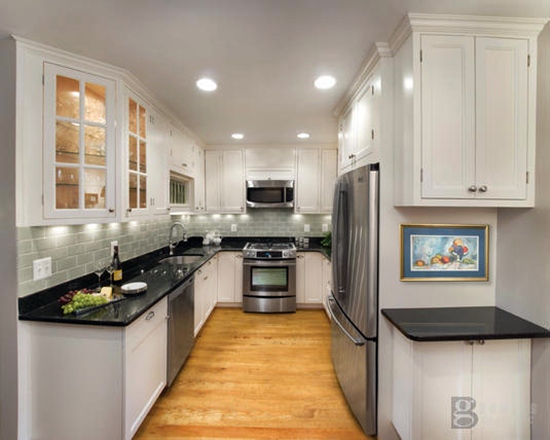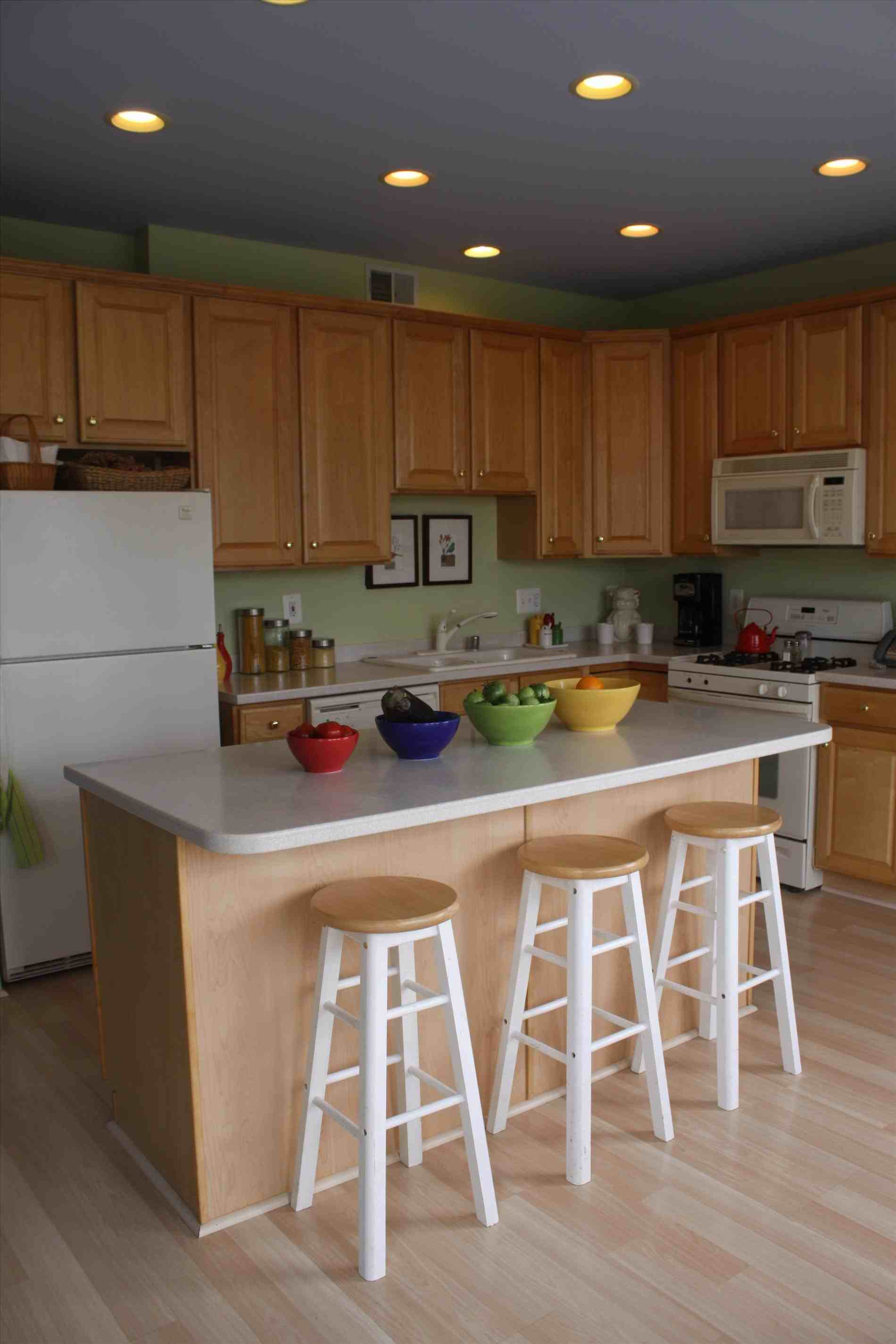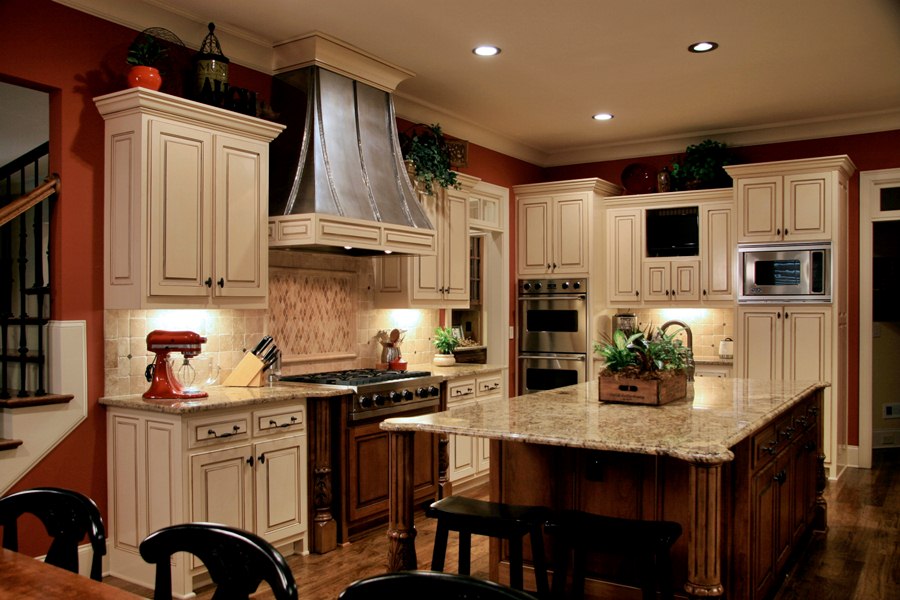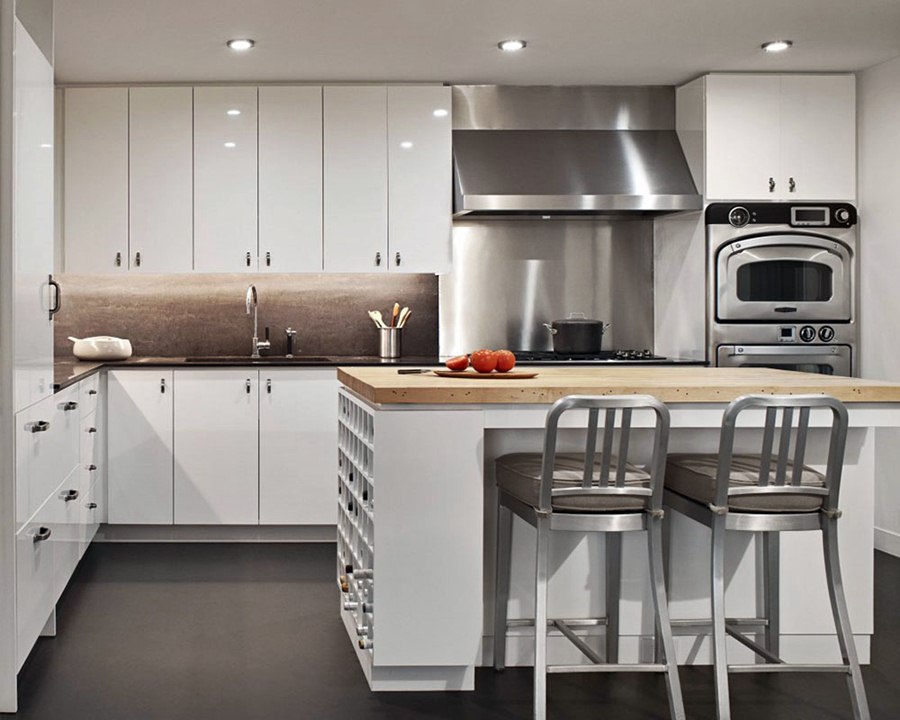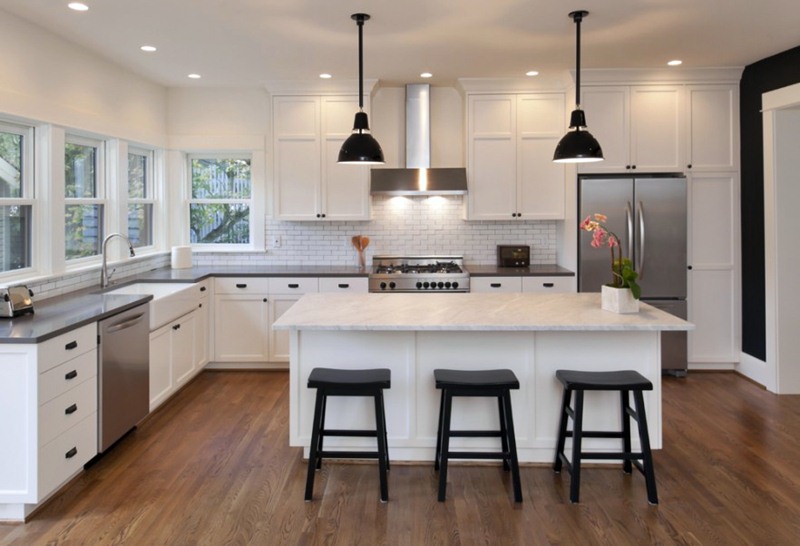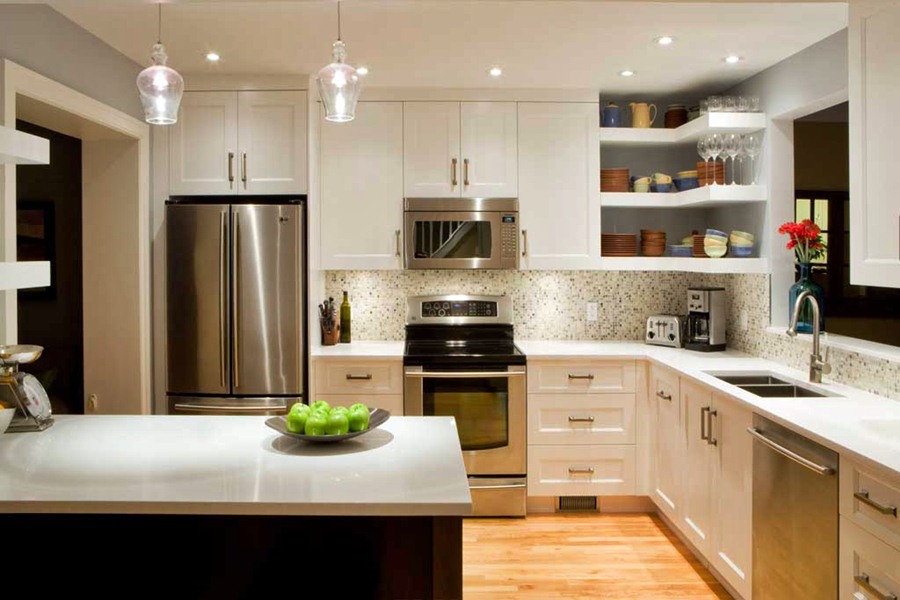When it comes to lighting up your kitchen, recessed lighting is a popular and practical option. But where exactly should you place these lights? The key is to strike a balance between functionality and aesthetics. Start by considering the layout of your kitchen and the location of your work areas. You want your recessed lights to provide enough light for cooking and food prep, but not be directly in your line of sight. Generally, it's best to install them in a grid pattern, evenly spaced throughout the kitchen. Another important factor to consider is the placement in relation to any overhead cabinets or shelves. You don't want the lights to cast shadows on your workspace, so make sure they are positioned in front of or to the side of these structures. Finally, keep in mind the size and shape of your kitchen. If you have a long, narrow kitchen, you may need more lights to ensure the entire space is well-lit. On the other hand, a smaller, square kitchen may only need a few strategically placed recessed lights.1. Recessed lighting placement in a kitchen
While it's always recommended to hire a professional electrician for any electrical work, installing recessed lighting in your kitchen is a task that can be done with a little DIY know-how. The first step is to determine the placement of your lights, as discussed in the previous heading. Once you have a plan in place, you'll need to cut holes in your ceiling for the lights to be installed. Make sure to carefully measure and mark where the holes should be before cutting. Next, you'll need to run electrical wiring to each of the light locations. This can be done through the attic or by cutting small channels in the ceiling. Make sure to follow all safety precautions and consult a professional if you are unsure about the wiring process. Once your wiring is in place, you can install the recessed light fixtures. Follow the manufacturer's instructions for each specific type of fixture. You may also need to install a housing unit for each light, which helps to protect against fire hazards and heat loss. Finally, attach the trim and light bulbs and test the lights to make sure they are working properly. If you're unsure about any of these steps, it's always best to seek the help of a professional.2. How to install recessed lighting in a kitchen
When it comes to choosing the best recessed lighting for your kitchen, there are a few factors to consider. First, you'll want to decide between traditional incandescent bulbs or energy-efficient LED bulbs. LED bulbs are more expensive upfront but can save you money in the long run on energy costs. Next, consider the size and shape of the fixtures. Round fixtures are the most common and provide a classic look, but square or rectangular fixtures can add a modern touch to your kitchen. You'll also want to consider the color temperature of the bulbs, which can range from warm white to cool white. It's also important to choose fixtures that are rated for damp or wet locations, as kitchens can be a source of moisture. And for added convenience, look for fixtures that can be dimmed to adjust the light level to your liking.3. Best recessed lighting for kitchen
Recessed lighting can add both function and style to your kitchen design. When planning your lighting design, consider layering different types of lighting for a well-rounded look. In addition to recessed lighting, you may also want to incorporate task lighting, such as under-cabinet lights, and decorative lighting, such as pendant lights or chandeliers. You can also use recessed lighting to highlight specific areas of your kitchen, such as a beautiful backsplash or a statement piece on your countertop. And don't be afraid to mix and match different sizes and shapes of fixtures to add visual interest to your space.4. Recessed lighting design for kitchen
The layout of your kitchen recessed lighting can have a big impact on the overall look and feel of your space. As mentioned before, it's important to evenly space the lights in a grid pattern to ensure proper lighting throughout the kitchen. For a standard-sized kitchen, you'll want to place the lights about 4-6 feet apart. If you have a larger kitchen, you may need to space them a bit closer together. And for smaller kitchens, you can space them a bit further apart. Make sure to also consider the placement in relation to any fixtures or furniture in the room. It's also important to note that the number of lights you need may vary depending on the type of bulbs you choose. LED bulbs provide more light coverage, so you may need fewer fixtures compared to traditional incandescent bulbs.5. Kitchen recessed lighting layout
In addition to the layout, the spacing of your recessed lighting is crucial for achieving the desired look and functionality in your kitchen. As a general rule, the distance between the light fixtures and any walls or cabinets should be at least half the distance between each fixture. This will help to evenly distribute the light and avoid dark spots in your kitchen. It's also important to consider the height of your ceilings when spacing out the lights. For standard 8-foot ceilings, the lights should be placed about 3 feet away from any walls or cabinets. For higher ceilings, you may need to space them a bit further away to maintain proper lighting.6. Recessed lighting spacing in a kitchen
As mentioned before, LED recessed lighting is a popular and energy-efficient option for kitchens. These bulbs produce less heat, use less energy, and have a longer lifespan compared to traditional incandescent bulbs. They also come in a variety of color temperatures, making it easy to find the perfect lighting for your kitchen. When choosing LED recessed lighting, make sure to look for bulbs with a high Color Rendering Index (CRI). This will ensure that the colors in your kitchen are accurately represented under the light. You'll also want to consider the lumens, or brightness, of the bulbs to ensure they provide enough light for your space.7. LED recessed lighting for kitchen
Recessed lighting can be a versatile option for any kitchen design, and the possibilities are endless. For a modern and sleek look, consider installing recessed lights in a grid pattern throughout the ceiling. You can also use them to highlight specific areas, such as above the sink or over the kitchen island. If you have a more traditional kitchen, you can use recessed lighting to add a touch of elegance. Consider installing small, decorative fixtures above your cabinets or in a coffered ceiling for a sophisticated touch. And for a unique and eye-catching design, you can use recessed lighting to create a focal point in your kitchen. Install a cluster of lights above a breakfast nook or use them to accentuate a beautiful piece of artwork.8. Recessed lighting ideas for kitchen
Recessed lighting is a popular choice for kitchen remodels, and for good reason. Not only does it provide excellent lighting for your space, but it also adds a clean and modern look. If you're planning a kitchen remodel, consider incorporating recessed lighting into your design. During the planning phase, make sure to consult with a professional to determine the best placement and number of recessed lights for your new kitchen. You may also want to consider adding dimmers for a customizable lighting experience.9. Kitchen remodel with recessed lighting
When it comes to lighting up your kitchen, you may be torn between recessed lighting and pendant lights. While both options have their benefits, it ultimately comes down to personal preference and the design of your kitchen. Recessed lighting provides overall ambient lighting, while pendant lights offer more focused task lighting. If you have a large kitchen with multiple work areas, you may benefit from a combination of both types of lighting. Pendant lights can also add a decorative element to your space, while recessed lighting is more subtle and blends in with the ceiling. Ultimately, the decision between recessed lighting and pendant lights will depend on your specific needs and design preferences. Consider consulting with a professional to determine the best lighting options for your kitchen.10. Recessed lighting vs. pendant lights in a kitchen
The Benefits of Recessed Lighting in a Kitchen

Efficiency and Functionality
 When it comes to kitchen design, efficiency and functionality are key.
Recessed lighting
offers both of these qualities, making it a popular choice for many homeowners. By being installed directly into the ceiling, recessed lights save space and provide a clean, streamlined look. This is especially useful in smaller kitchens where every inch counts. In addition,
recessed lighting
is also incredibly versatile, as it can be strategically placed to provide optimal lighting for specific areas, such as over a kitchen island or above the sink.
When it comes to kitchen design, efficiency and functionality are key.
Recessed lighting
offers both of these qualities, making it a popular choice for many homeowners. By being installed directly into the ceiling, recessed lights save space and provide a clean, streamlined look. This is especially useful in smaller kitchens where every inch counts. In addition,
recessed lighting
is also incredibly versatile, as it can be strategically placed to provide optimal lighting for specific areas, such as over a kitchen island or above the sink.
Enhanced Ambiance
 Not only is
recessed lighting
practical, but it also adds to the overall ambiance of a kitchen. With the ability to control the intensity of the lights, you can create different moods depending on the occasion. Whether you want bright, natural lighting for cooking or a warm, cozy glow for entertaining guests,
recessed lighting
can easily be adjusted to fit your needs. This type of lighting also eliminates the need for bulky, traditional light fixtures, giving your kitchen a more modern and sophisticated look.
Not only is
recessed lighting
practical, but it also adds to the overall ambiance of a kitchen. With the ability to control the intensity of the lights, you can create different moods depending on the occasion. Whether you want bright, natural lighting for cooking or a warm, cozy glow for entertaining guests,
recessed lighting
can easily be adjusted to fit your needs. This type of lighting also eliminates the need for bulky, traditional light fixtures, giving your kitchen a more modern and sophisticated look.
Increased Property Value
 Investing in
recessed lighting
for your kitchen not only enhances the functionality and aesthetics of the space, but it can also increase the value of your home. Potential buyers are often drawn to homes with updated and modern features, and
recessed lighting
is a desirable feature that can make your home stand out in the market. This makes it a smart investment for homeowners looking to sell their property in the future.
Investing in
recessed lighting
for your kitchen not only enhances the functionality and aesthetics of the space, but it can also increase the value of your home. Potential buyers are often drawn to homes with updated and modern features, and
recessed lighting
is a desirable feature that can make your home stand out in the market. This makes it a smart investment for homeowners looking to sell their property in the future.
Conclusion
:max_bytes(150000):strip_icc()/kitchenrecessedlighting-GettyImages-155383268-dec5caad600541ff81cbdd6d06846c66.jpg) In conclusion,
recessed lighting
is a highly beneficial addition to any kitchen. Its efficiency, functionality, versatility, and ability to enhance ambiance make it a popular choice among homeowners. Not only does it improve the overall design of a kitchen, but it also adds value to the property. So, if you're looking to upgrade your kitchen, consider
recessed lighting
as a stylish and practical option.
In conclusion,
recessed lighting
is a highly beneficial addition to any kitchen. Its efficiency, functionality, versatility, and ability to enhance ambiance make it a popular choice among homeowners. Not only does it improve the overall design of a kitchen, but it also adds value to the property. So, if you're looking to upgrade your kitchen, consider
recessed lighting
as a stylish and practical option.




































